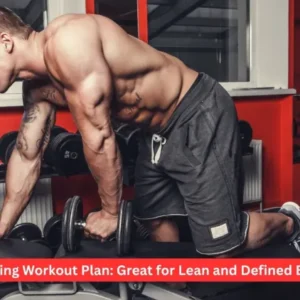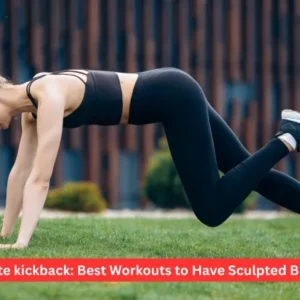Explode With Power Castillo Kettlebell Squat This course will help you master techniques and variations that target key muscles, boost mobility, and elevate your full-body fitness.
Squats are natural. Squats are fundamental. Squats are simply essential!
Squatting is inherently built into our DNA as a natural motion. Observe an 18-month-old child effortlessly pick something up with flawless technique. As we age and perhaps become less flexible, we tend to resort to alternative methods to pick things up, often risking strain on our backs.
Squatting remains one of the most effective exercises for strengthening the lower body and core.
Kettlebell squats stand out because the weight can be positioned away from the body, either in front or to one side (unilaterally), which requires additional back engagement and cross stabilization.
Each time you squat, you engage hundreds of muscles, both large and small, helping to build strength, burn fat, and boost your confidence.
What is Kettlebell Squats?
Kettlebell squats are a dynamic, multi-muscle exercise that works muscles including the quadriceps, hamstrings, glutes, core, biceps, and shoulders. Holding the kettlebell at chest height works the lower body and enhances core stability. This exercise works on your functional strength, mobility, and cardiovascular endurance. Goblet squat, sumo squat, overhead squat, etc., kettlebell squat exercises have different ranges of motion and various target muscle groups, so this is a very versatile component of any fitness system.
MUSCLES WORKED IN KETTLEBELL SQUATS
Kettlebell squats are a full-body exercise, engaging some of the largest muscle groups, but depending on the variation, they can work nearly every part of your body.
Every kettlebell squat activates key areas, such as your quadriceps, hamstrings, glutes, calves, core, forearms, and both upper and lower back.
The specific variations of kettlebell squats allow for increased activation of the posterior chain and core, as explained below.
DIRTY LITTLE SECRETS OF THE BIG MOVEMENT: TECHNIQUE, VARIATIONS, AND BENEFITS
Bodyweight Squat
If you’re a squat newbie or coming back after a long break, the bodyweight squat is crucial to get right before you move on to squats with weights (kettlebells, barbell and other forms of resistance). This is a great exercise as a workout by itself, but as well as a warmup leading up to heavier squats as it helps get all the muscles that are required to be activated.
Begin standing with your feet a little wider than hip distance apart, toes facing either forward or slightly outward. Have your hands out in front of you at shoulder height. Inhale and engage your core.
Getting your weight over your legs, bend your knees and move your hips back. Maintain a straight back and keep your knees aligned over your toes. Lower yourself until the thighs are at near parallel to the ground.
If your heels lift, or your back rounds, only go as deep as you can without losing form. If you want to squat deeper do some specific mobility work.
Inhale and exhale as you stand up straight.
Keep core activation throughout the movement.
Shoot for 3 sets of 8 to 15 reps.
Kettlebell Goblet Squat
Once you own the bodyweight squat and can handle 10 reps, move to the Kettlebell Goblet Squat. It’s simple, but has a few variations (holding horns, bottom-up, bottom-down). In addition to strength benefits, it teaches proper body alignment with the kettlebell’s counterbalance.
The most popular variation has you holding the kettlebell by the horns (handle) at chest level, bottom facing down.
Here’s the sequence:
- Stand with your feet a little wider than shoulder-width apart with your toes turned 5–10 degrees outward.
- Keeping your shoulders back and down, clean the kettlebell to chest level. Grip the handle firmly.
- Lower into a squat until your thighs are parallel to the floor (or as low as you can go) with a neutral spine.
- Explode upwards. Concentrate on deriving power through the act of pushing the ground away.
- Knees and toes should line up; heels remain grounded. Particle inhale and raise your chest and look forward.
For the bottom-down version, take the kettlebell by the base and support it like a watermelon, squatting down deep, leaning back without breaking form.
For the bottom-up version, hold the kettlebell by the horns, the bottom facing up. As you squat, make sure that your elbows push against the insides of your knees, which will help you maintain a good posture.
This variation is especially effective when it comes to building strength in your forearms and grip — both of which play a key role in functional strength.
Kettlebell Front Squats
Single Kettlebell Front Squat
The Kettlebell Front Squat can be performed unilaterally (with one kettlebell). This movement shifts your center of gravity, requiring more cross-body stabilization and constant core engagement.
Start with 5 sets of 5 reps on each side, gradually increasing reps as you become more comfortable. This movement is part of powerlifters’ routines due to its unique challenges.
Clean the kettlebell into the rack position. Your unloaded arm can stay tucked or extend at a 90-degree angle for counterbalance. After you’re comfortable with one position, try the other to add variety and challenge.
Double Kettlebell Front Squat
The Double Kettlebell Front Squat allows for heavier loading and can be performed anywhere with two kettlebells. To execute, clean the kettlebells into the rack position, squat to depth, and return to the starting position.
Always maintain a strong back when returning the kettlebells to the ground after each set.
Kettlebell Sumo Squat
In the Sumo Squat, your stance is wider, and toes are turned outward more than in the Goblet or Front Squats. This variation engages your inner thighs and calves more.
Start with a very wide stance, turning your feet about 45 degrees outward. Instead of cleaning the kettlebell to your chest, hold it by the handle with both hands. Keep your back straight and core engaged as you squat, lowering the kettlebell until it touches the ground, then return to the standing position, squeezing your glutes at the top.
Kettlebell Jump Squats
Kettlebell Jump Squats begin in a position similar to the Kettlebell Sumo Squats, with your feet pointed forward and the kettlebell below your waist. Squat down to a 90-degree position, and then use explosive power to jump upwards while maintaining your grip on the kettlebell.
This variation builds explosive power and gets your heart pumping!
Kettlebell Overhead Squat
The Kettlebell Overhead Squat is an advanced exercise that involves holding a heavy object overhead. If you haven’t yet mastered basic squat variations or movements like the Clean and Press and Turkish Get Up, focus on those first before attempting this one.
Conclusion – Kettlebell Squat
Kettlebell Squats: THE most time-efficient (and versatile) builder of upper and lower body muscle! As added suggestions, variations such as the Goblet, Front, Sumo, and Overhead squats can be used to keep your muscles challenged and ensure strength gains and functional mobility. Whether you are just starting out or a seasoned lifter, kettlebell squats can be easily tailored to your fitness goals. The cleaner you are at this movement, the more you will be able to appreciate the other benefits, both physical and also confidence-wise.
FAQs – Kettlebell Squat
What muscles do kettlebell squats use?
Target Muscle Groups of Kettlebell Squats The primary muscle groups activated during the kettlebell squat are the quadriceps, hamstrings, glutes, calves, and core. Depending on the variation, they can also target the forearms and upper and lower back to increase functional strength and stability.
Is it appropriate to train the kettlebell squat form?
To improve your form, align your back, knees, and toes, and make sure to stay grounded in your heels. Flex your chest up and engage your core throughout the contact. Performing bodyweight squats prior to loading on weight is a great way to perfect your technique.
Do kettlebell squats burn fat?
Absolutely, kettlebell squats are a beneficial compound exercise that works multiple large muscle groups, resulting in a higher caloric burn, lost fat, and increased strength.
What’s the difference between a goblet squat and a front squat?
While a goblet squat has you hold the kettlebell close to your chest with both hands, a front squat employs a rack position to hoist the kettlebell. The Goblet Squat is more beginner-friendly, while the Front Squat requires a little more core stability and can also be done with one or two kettlebells.







